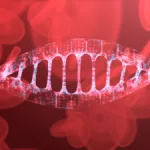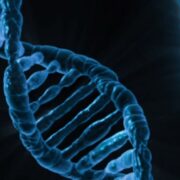In the ever-evolving field of forensic science Discover the fascinating field of Forensic Science, the application of scientific principles to legal matters. This post delves into its many disciplines, from DNA analysis to crime scene investigation, its importance in the justice system, Read Full Definition, researchers are constantly seeking innovative techniques to enhance the accuracyIn scientific and measurement contexts, "accuracy" refers to the degree of proximity or closeness between a measured value and the true or actual value of the measured quantity. Accuracy indicates how well a measurement reflects Read Full Definition and reliability of crime scene investigations. One such breakthrough comes from a team of scientists at Flinders University in Australia, who have developed a novel method to measure an individual’s propensity to shed DNA
Discover the fascinating field of Forensic Science, the application of scientific principles to legal matters. This post delves into its many disciplines, from DNA analysis to crime scene investigation, its importance in the justice system, Read Full Definition, researchers are constantly seeking innovative techniques to enhance the accuracyIn scientific and measurement contexts, "accuracy" refers to the degree of proximity or closeness between a measured value and the true or actual value of the measured quantity. Accuracy indicates how well a measurement reflects Read Full Definition and reliability of crime scene investigations. One such breakthrough comes from a team of scientists at Flinders University in Australia, who have developed a novel method to measure an individual’s propensity to shed DNA DNA, or Deoxyribonucleic Acid, is the genetic material found in cells, composed of a double helix structure. It serves as the genetic blueprint for all living organisms. Read Full Definition, a crucial factor in linking suspects to crime scenes. This pioneering approach could profoundly impact how law enforcement agencies approach DNA evidence
DNA, or Deoxyribonucleic Acid, is the genetic material found in cells, composed of a double helix structure. It serves as the genetic blueprint for all living organisms. Read Full Definition, a crucial factor in linking suspects to crime scenes. This pioneering approach could profoundly impact how law enforcement agencies approach DNA evidence Evidence is any form of proof, such as objects, materials, or scientific findings, presented to establish or disprove a fact in a legal proceeding. It is used to reconstruct events and link or exclude individuals Read Full Definition and potentially solve cases that have remained unsolved for years.
Evidence is any form of proof, such as objects, materials, or scientific findings, presented to establish or disprove a fact in a legal proceeding. It is used to reconstruct events and link or exclude individuals Read Full Definition and potentially solve cases that have remained unsolved for years.
- The Challenge of DNA Shedding Variability
- A Novel Approach to DNA Shedding Analysis
- The Study and Its Findings
- Male vs. Female Shedding Patterns
- Implications for Criminal Investigations
- Refining the Technique for Real-World Applications
- The Role of DNA Profiling in Modern Forensics
- Overcoming the Limitations of Traditional DNA Profiling
- The Importance of Consistent Shedding Patterns
- Enhancing the Interpretation of DNA Evidence
- Refining Likelihood Ratio Analyses
- Potential Applications in Cold Case Investigations
- Collaboration and Validation: The Path Forward
- Ethical Considerations and Privacy Concerns
- The Future of Forensic DNA Analysis
The Challenge of DNA Shedding Variability
DNA evidence has long been a powerful tool in criminal investigations, providing critical links between suspects and crime scenes. However, a significant challenge arises when dealing with individuals who are classified as “low shedders,” meaning they naturally shed fewer skin cells and other cellular material containing DNA. In such cases, the amount of DNA left behind at a crime scene may be minimal, making it difficult to obtain a reliable sample for analysis and comparison.
A Novel Approach to DNA Shedding Analysis
Recognizing this challenge, the researchers at Flinders University have developed a groundbreaking forensic technique that aims to quantify an individual’s DNA shedding propensity. By studying the shedding patterns of 100 volunteers, the team discovered that while individuals vary in their shedding rates, ranging from very low to very high, each person exhibits a consistent and reproducible shedding profile.
The Study and Its Findings
The study, aptly titled “Shedding more light on shedders,” employed a robust, cost-effective, and straightforward method to collect and analyze the DNA samples from the volunteers. The researchers found that 98 out of the 100 participants demonstrated consistent cell deposition levels, regardless of when the samples were collected. This remarkable consistency suggests that an individual’s shedding profile can be reliably established and used as a baseline for comparison with DNA evidence found at crime scenes.
Male vs. Female Shedding Patterns
One intriguing finding from the study revealed that males tend to be more prolific shedders than females, depositing a higher number of cells per square millimeter. However, the researchers noted that there was no significant difference in shedding patterns between an individual’s right and left thumbs, indicating that the hand used to handle an object does not influence the amount of DNA deposited.
Implications for Criminal Investigations
The implications of this groundbreaking research are far-reaching. By establishing an individual’s shedding profile, law enforcement agencies can better evaluate the likelihood of finding that person’s DNA on an item or surface at a crime scene. This information can be incorporated into a likelihood ratio analysis, providing investigators with a more comprehensive understanding of the evidence and its potential significance.
Refining the Technique for Real-World Applications
While the initial study has yielded promising results, the researchers acknowledge the need for further refinement and validationValidation, often referred to as method validation, is a crucial process in the laboratory when introducing a new machine, technology, or analytical technique. It involves a series of systematic steps and assessments to ensure that Read Full Definition. They plan to continue their work, fine-tuning the techniques and methodologies to ensure their applicability in real-world criminal investigations. As the research progresses, the forensic community eagerly anticipates the potential impact of this innovative approach on solving complex cases and delivering justice.
The Role of DNA Profiling in Modern Forensics
DNA profiling
Overcoming the Limitations of Traditional DNA Profiling
The groundbreaking research conducted at Flinders University aims to address this challenge by introducing a novel approach to DNA shedding analysis. By quantifying an individual’s propensity to shed DNA, the researchers have opened up new avenues for interpreting and understanding the significance of DNA evidence found at crime scenes.
The Importance of Consistent Shedding Patterns
One of the key findings of the study is the remarkable consistency in shedding patterns exhibited by individuals. Despite variations in overall shedding rates, ranging from very low to very high, each participant demonstrated a reproducible shedding profile. This consistency suggests that an individual’s shedding propensity is a unique characteristic that can be reliably established and used as a baseline for comparison with DNA evidence found at crime scenes.
Enhancing the Interpretation of DNA Evidence
By incorporating an individual’s shedding profile into the analysis, investigators can gain a more comprehensive understanding of the DNA evidence and its potential significance. For instance, if a suspect is identified as a low shedder, the absence of their DNA at a crime scene may not necessarily exonerate them, as their propensity for shedding DNA is inherently lower. Conversely, if a high shedder’s DNA is found at a crime scene, the likelihood of their involvement may be more substantial.
Refining Likelihood Ratio Analyses
The researchers propose integrating shedding profiles into likelihood ratio analyses, a statistical approach used to evaluate the weight of evidence in forensic investigations. By considering an individual’s shedding propensity, likelihood ratios can be more accurately calculated, providing investigators with a more reliable assessment of the probativeProbative - possessing the potential to provide details that are valuable to an investigation. Read Full Definition value of the DNA evidence.
Potential Applications in Cold Case Investigations
One of the most exciting potential applications of this groundbreaking research lies in its ability to shed light on cold cases – unsolved crimes that have remained dormant for years due to a lack of conclusive evidence. By revisiting the DNA evidence collected from these cases and analyzing it through the lens of shedding profiles, investigators may uncover new leads or gain insights that could potentially break open these long-standing mysteries.
Collaboration and Validation: The Path Forward
While the initial study has yielded promising results, the researchers acknowledge the need for further validation and refinement of their techniques. Collaboration with law enforcement agencies, forensic laboratories, and the broader scientific community will be crucial in ensuring the real-world applicability and acceptance of this innovative approach.
Ethical Considerations and Privacy Concerns
As with any advancement in forensic science, the implementation of DNA shedding analysis raises important ethical considerations and privacy concerns. Safeguards must be put in place to ensure the responsible and ethical use of this technique, protecting individual rights while upholding the principles of justice and due process.
The Future of Forensic DNA Analysis
The groundbreaking research conducted at Flinders University represents a significant step forward in the field of forensic DNA analysis. By addressing the challenges posed by variable shedding rates and providing a more comprehensive understanding of DNA evidence, this innovative approach has the potential to revolutionize crime scene investigations and enhance the pursuit of justice.
As the scientific community continues to explore and refine this technique, the future of forensic DNA analysis promises to be more accurate, reliable, and impactful than ever before.











